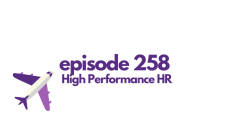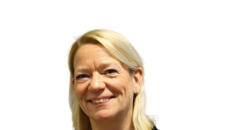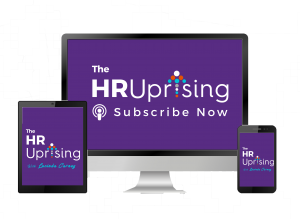
The term O.D. or Organisational Development is very poorly understood, even within HR itself. Yet, could it hold the key to the profession, elevating its status and being viewed as more strategic?
This Episode – The Art of Demystifying O.D.
In this episode of The HR Uprising Podcast, The Art of Demystifying O.D., Lucinda explains the 3 main pillars of O.D. :
- Transforming an organisation to meet business goals
- Applying evidence-based theories systematically to achieve results
- Managing or delivering change.
O.D. can be very effective in helping you to meet your business goals. There are a number of different kinds of O.D. Interventions you can use. It’s important to know what will work for you so you can implement them in your organisation. Also, don’t miss the 5-step process that any practitioner can use to apply O.D., so start tuning in!
Key Takeaways
- What is O.D. (Organisational Development) anyway? It’s about evolving, adapting, or improving an organisation. And, according to CIPD, it’s a “planned and systematic approach to enabling sustained organisational performance through its involvement with people.” It should be aligned with your business strategies.
- It can change the structure, skills, and behaviours within the company so you can move towards your goal faster and efficiently.
- Examples of O.D. interventions include:
- To develop a new performance management process
- To understand cultural issues, values, etc.
- For job redesign
- The 5-Step Process on how to do O.D. is as follows:
- 1 – Understand the needs. What do you need in relation to your organisational strategy?
- You need people with different skills to be competitive.
- Use diagnostic tools.
- 2 – Decide on how are you going to address those needs.
- 3 – Select your intervention: human process, business process, HR interventions, strategic interventions.
- 4 – Implementation
- 5 – Evaluate the change
- 1 – Understand the needs. What do you need in relation to your organisational strategy?
- The Difference between HR and O.D.: “It’s O.D. when it’s orientated widely in the wider organisation whereas HR is more specifically about a human resources process or about people.”
Best Moments
- “The key is doing it in line with business goals.”
- “Anything to do with change pretty much fits within O.D.”
- “It’s not just getting better at appraisals. It’s actually making something more effective in terms of meeting the organisation’s goals.”
- “If an O.D.’s intervention is done well, it needs to lead to a change in the business.”
- “Take on a structured approach when delivering change.”
Valuable Resources
- https://scienceforwork.com/
- Center for Evidence-Based Management https://www.cebma.org/
- Actus White Paper – How to make sense of O.D.
- You can access additional free HR Resources via the Actus Software website link below. Lucinda Carney is the founder and CEO of Actus Software: https://actus.co.uk/free-performance-management-resources/
About The Host
Lucinda Carney is a Business Psychologist with 15 years in Senior Corporate L&D roles and a further 10 as CEO of Actus Software where she worked closely with HR colleagues helping them to solve the same challenges across a huge range of industries. It was this breadth of experience that inspired Lucinda to set up the HR Uprising community to facilitate greater collaboration across HR professionals in different sectors, helping them to ‘rise up’ together.
“If you look up, you rise up”
Contact Method
- Join the LinkedIn community – https://www.linkedin.com/groups/13714397/
- Email: Lucinda@advancechange.co.uk
- LinkedIn: https://www.linkedin.com/in/lucindacarney/
- Twitter: @lucindacarney
- Instagram: @hruprising
- Facebook: @hruprising
Subscribe To The HR Uprising Podcast Now:















Add comment